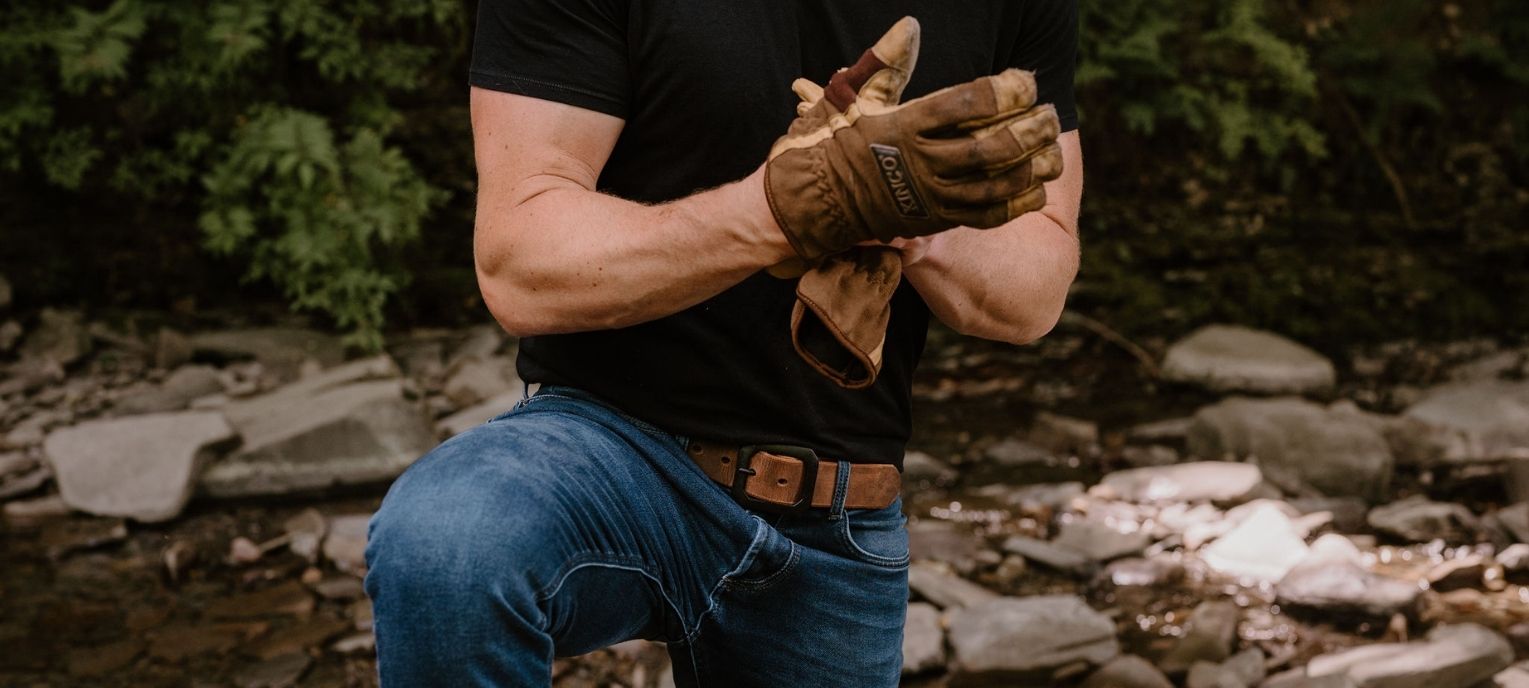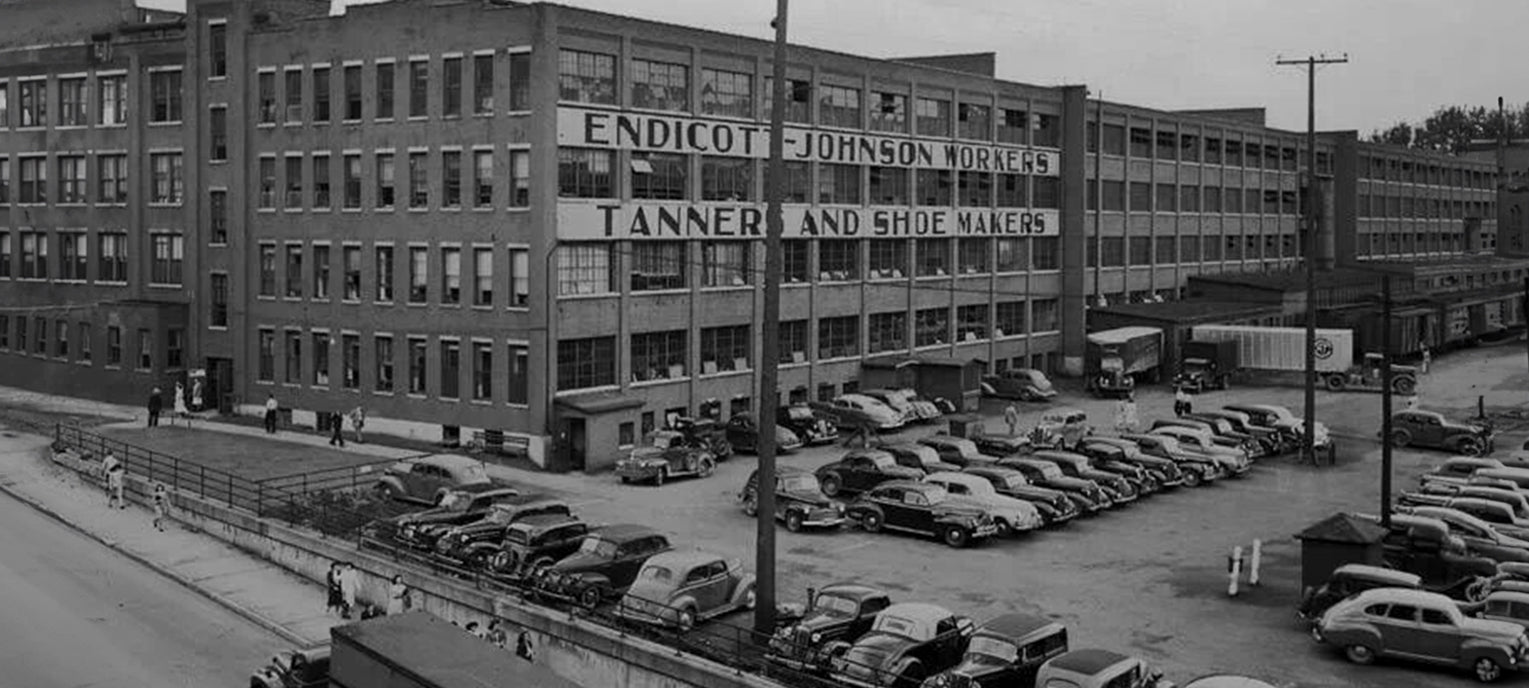If you've spent any time shopping for a quality belt, you've probably seen the term "full-grain leather" thrown around like it's some kind of magic buzzword. And honestly? It kind of is. But not in the marketing sense. Full-grain leather genuinely is the gold standard when it comes to making gear that lasts, and understanding why can help you make smarter decisions about what you're putting around your waist every single day.
At Hank's, we don't mess around with top-grain, corrected-grain, or any of that sanded-down stuff. Everything we make starts with full-grain leather because it's the only cut that keeps the hide's strongest, most durable fibers completely intact. That top layer, the part that lived on the outside of the animal, is where all the good stuff happens. It's dense, it's tough, and it's built to handle stress without falling apart.
What makes full-grain special is how it ages. Instead of cracking or peeling like cheaper leathers, it develops a patina over time. That means it gets richer, darker, and more unique to you. The belt you break in today won't look the same in five years, and that's the whole point. It's gear that tells a story, not something you throw away after a year because the finish wore off.
But here's the thing: not all full-grain leather is created equal. The type of hide matters just as much as the cut. At Hank's, we work with three main types of full-grain leather, each one chosen for specific reasons. Steerhide, bison, and water buffalo all bring something different to the table, and knowing what sets them apart can help you figure out which one fits your lifestyle best.
Steerhide: The Everyday Workhorse
When most people think of leather, this is what they're picturing. Steerhide is the classic, no-nonsense choice that's been trusted for generations because it just works. It's strong, it's structured, and it holds its shape like nothing else. If you need a belt that's going to stay put, support a holster, or handle the daily grind without complaint, steerhide is where you start.
What makes steerhide so reliable is its balance. It's firm enough to provide real support, especially for carrying tools or a concealed firearm, but it's not so stiff that it feels like you're wearing a plank. The break-in period is noticeable but manageable. You'll feel it soften over the first few weeks of wear, molding to your body and the loops of your jeans without losing its backbone.
This is the leather for guys who need their belt to do its job without any drama. It doesn't stretch out and go limp after a few months. It doesn't sag under the weight of a heavy buckle or daily carry gear. It stays flat, stays strong, and keeps everything exactly where it's supposed to be. That rigidity is what makes it ideal for work belts, gun belts, and anyone who wants something that feels solid the second they put it on.
Steerhide also has a clean, even grain that takes dye beautifully. Whether you want a rich brown or classic black, the color goes deep into the leather and stays vibrant for years. And because the surface isn't corrected or buffed down, you're getting the real deal. Every mark, every scratch, every bit of character that develops over time just adds to the look. It's honest leather that doesn't try to hide what it is.
For daily wear, this is the go-to. It's the kind of belt you can throw on without thinking about it because you know it's going to hold up. Whether you're wearing it to the job site, or just out and about, steerhide gives you that reassurance that your gear isn't going to let you down halfway through the day.
Bison Leather: Rugged Character with Real Toughness
Bison leather is where things get interesting. This isn't your standard belt material, and that's exactly why people love it. If you've never felt bison leather before, the first thing you'll notice is the texture. It has this natural pebbled grain that gives it instant character right out of the box. It looks rugged, feels rugged, and carries a certain presence that steerhide just doesn't have.
But don't let the softer feel fool you. Bison is incredibly tough. In fact, it's often compared to steerhide in terms of strength, but with a completely different personality. Where steerhide is firm and structured, bison is supple and forgiving. It conforms to your body faster, feels more broken-in from the start, and has this warmth to it that makes it comfortable to wear all day long.
Part of what makes bison unique is the animal itself. Bison hides are thicker and denser than cattle, with a natural resilience that comes from surviving harsh climates. That toughness translates directly into the leather. It can take a beating without showing it. Scratches and scuffs tend to blend into the grain rather than standing out, which means your belt keeps looking good even after years of hard use.
The natural grain also means every bison belt is one of a kind. No two hides are exactly the same, so the texture and patterning you get on your belt won't match anyone else's. If you're the kind of guy who appreciates gear that stands out without being flashy, bison delivers that in spades.
Another thing worth mentioning is how bison ages. Like all full-grain leather, it develops a patina, but bison does it with a little more swagger. The oils in the leather interact with your skin, the sun, and the environment in a way that deepens the color unevenly, creating this rich, layered look over time. It's the kind of leather that looks better the more you wear it, and people notice.
Bison is perfect for guys who want something that feels premium but still built to last. It's not dress leather, and it's not trying to be. It's tough, comfortable, and full of character from day one. If you want a belt that makes a statement without saying a word, this is it.
Water Buffalo Leather: Built to Outperform
Water buffalo leather is the underdog of the leather world, and it deserves way more credit than it gets. This stuff is seriously strong. We're talking about a hide that comes from an animal built to haul heavy loads through rough terrain in some of the toughest environments on earth. That kind of work leaves its mark on the leather in the best possible way.
What sets water buffalo apart is its fiber structure. The fibers are longer and more interwoven than what you'll find in steer or even bison. That gives the leather incredible tensile strength, meaning it can stretch and flex under pressure without tearing or losing its shape. If you're someone who carries a lot of weight on your belt, whether that's tools, a holster, or just the demands of a physical job, water buffalo won't let you down.
At the same time, it's surprisingly comfortable. Despite being one of the strongest leathers out there, it's also flexible in a way that makes it easy to wear. It doesn't dig into your sides like an overly stiff belt can, and it moves with you instead of against you. That combination of strength and flexibility is rare, and it's what makes water buffalo such a solid choice for everyday carry belts or any application where you need reliability without sacrificing comfort.
The grain on water buffalo is a little more textured than steerhide but not as pronounced as bison. It has this subtle, natural look that doesn't scream for attention but still has plenty of depth. And like the other full-grain leathers we use, it ages beautifully. The more you wear it, the better it looks, picking up that deep, worn-in character that only real leather can achieve.
One of the things people don't always realize about water buffalo is how well it holds up to moisture. It's not waterproof by any means, but it handles humidity and sweat better than a lot of other leathers. If you live somewhere hot or you're hard on your gear, that extra durability makes a real difference. It won't dry out and crack as easily, and it bounces back from tough conditions without falling apart.
For guys who put their belts through hell and need something that can keep up, water buffalo is the answer. It's strong, it's flexible, and it's built to handle whatever you throw at it. This is the leather for people who don't want to baby their gear. You want to use it hard? Go ahead. It'll hold up.
Why It All Comes Back to Full-Grain
At the end of the day, the reason we only work with full-grain leather is simple: it's the only cut that delivers on the promise of a belt that actually lasts. Whether you choose steerhide for its structure, bison for its character, or water buffalo for its toughness, you're getting leather that was built to age with you, not against you.
Cheaper leathers might save you a few bucks upfront, but they don't perform. They crack, they stretch out, and they end up in the trash. Full-grain leather is an investment, but it's one that pays off every single day you wear it. This is gear you buy once, break in, and keep for decades. That's the whole point.
So when you're picking out your next belt, don't just grab whatever looks good in the moment. Think about how you're actually going to use it. Think about the kind of leather that fits your life. Because once you've worn a real full-grain belt, you're not going back.





